Article and photos by John Lacher
I grew up in the hills just outside Boulder. That upbringing offered me the opportunity to ramble around the mountainside on little explorations. I was always thinking about discoveries just beyond the next ridge or rock outcrop. Perhaps I would find an abandoned cabin, an old Indian campsite, or maybe the next quartz vein would have a chunk of gold sticking out of it. This would certainly be a big supplement to my paper route money. Alas, I never found anything of worth, but would sometimes run into a dip on the mountainside or a secluded ridge line where no houses were visible nor sounds of humanity present. They always seemed magical somehow, and to me they were true wilderness areas. I still enjoy poking around less traveled areas in Colorado.
Last year my eyes fell on Badger Creek on a map. It runs into the Arkansas River from the north, and seemed like a great place to visit, fish and explore. Last fall I drove to the North end, where County Road 2 crosses Badger Creek. There were a few fish, and not many people. I camped one night. Unzipping the tent next morning, my eyes fell on a lovely mountain bluebird perched on a cow pie eight feet away. I took that for good Karma, since the bird was in no hurry to leave, and we enjoyed each others’ company for a few minutes.
That afternoon, three gentlemen from Colorado Springs appeared. They had hiked down a few miles to fish. One fellow stated that he had always wanted to hike down the whole canyon to the Arkansas, but had heard that there were no trails, and that it might be a little tough going. Much like a lake cutthroat rising toward a dry fly, I was hooked.
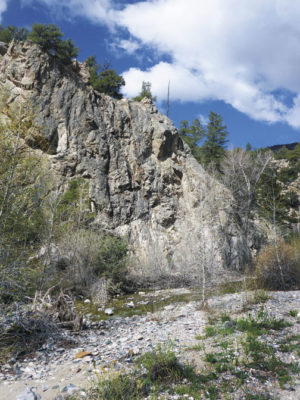
This spring, John Sztukowski with Wilderness Connections led an informational trip a few miles up Badger Creek. We learned that this is a wilderness study area, and that much of the land is Forest Service or Bureau of Land Management. Some grazing leases exist, but many of the area ranchers are somewhat receptive of the wilderness proposal. We hiked nearly up to where Little Badger Creek comes in. There are the remains of a wagon road on the west side of the valley, and a few cabins near Little Badger Creek. Above this point it was reputed to be a bit wilder.
Ken Hare, Jeff Cole and I went down Badger Creek over four days this past May. At County Road 2, the creek is about a foot wide and a bit muddy. It drops down after a quarter of a mile where seeps and springs come in. Thereafter the creek is mostly clear and about 6 to 12 feet wide. There is a lot of moss and watercress and the fish are a bit skittish, so the fishing was a bit of a challenge. There is a sketchy trail on the west side in places. We camped about three miles down on an open bend in the creek just where Gribbles Run comes in from the east. The end of that valley is fenced, signposted, and obviously a private ranch.
On the second day we passed a cabin remnant on the east side of the creek, the trail petered out and the valley bottom narrowed. From here on the bottom was more overgrown, and we needed to either climb above small outcrops or switch to the other side of the stream. We crossed about 8 to 10 times that day and the next, either stone-hopping, wading or by small engineering projects. No more cabins were in evidence. Signs of them were frequent, but we saw no game. Just some old, and a few new, lion kills. Not much evidence of humans was present: A rare old fence remnant, an abandoned Kelty pack frame. We camped that night on a river bench on the west side, having to throw out some fairly fresh deer parts to clear a place. A trail of deer hair led uphill to the remainder of the deer, both uneaten and digested. We slept well.
These two days were wild. There were no trophy homes, candy wrappers or beer cans. No youth with smartphones, no sound except wind, water and footfall.
[InContentAdTwo]
It just felt different. I don’t know if it will ever be declared a wilderness by act of Congress, but the area doesn’t need it. It is mystical and wild without needing government approval. There are not many places like this left in Colorado.
After returning to Denver, my 12-year-old grandson told me about what they had learned in school science class. The gist of this was that in narrow valleys that have little or no dominant predator, the deer and other ungulates stay close to water in the valley bottom and graze or browse it clear. If, on the other hand, there is much predation, those animals go to water, but forage along the hillsides, resulting in a more overgrown valley bottom. That seemed to fit Badger Creek. It seemed plenty wild to us.
Since John Lacher retired from medical practice in Denver, he pokes around Colorado a lot, bothers trout a little, and sends letters to politicians, most of which are ignored.

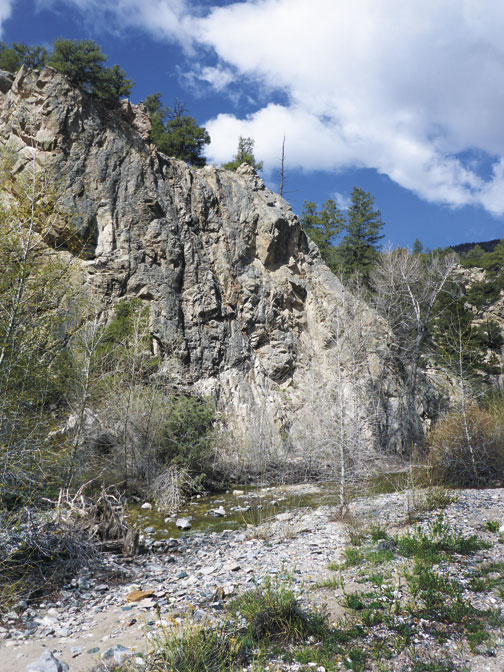
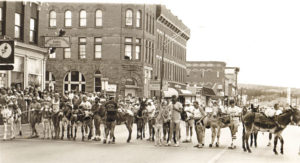
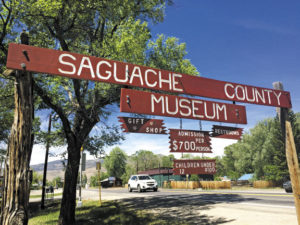
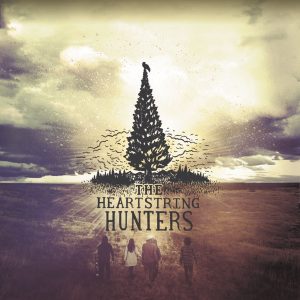
I think this is part of the area where they doubled the mountain lion limit from 25 to 50 cats because of reduced white tail populations. This area is also the home of some very large bighorns. Another interesting place is about a mile upstream where you came in. It is on the bluffs above the creek. There is a group of about 25 or 30 stone circles they call the “Indian forts” which is a lookout point up and down the Ute trail. Don’t tell anybody, it’s suppose to be hush hush.